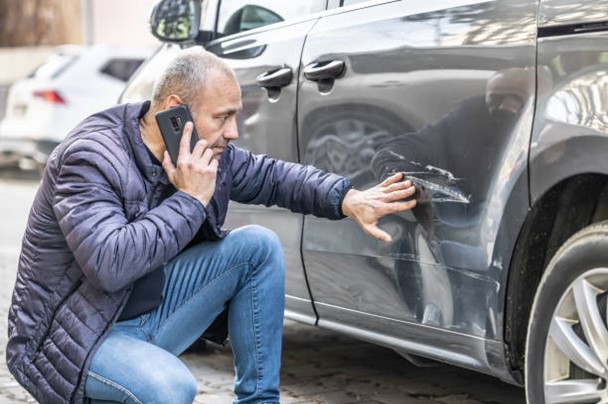
Speeding is one of the leading causes of car accidents across the United States, contributing to thousands of fatalities and serious injuries every year. While it might seem harmless to go a few miles over the speed limit, even minor increases in speed can drastically reduce a driver’s ability to react to changing road conditions, avoid obstacles, and control their vehicle. At Buckeye Law Group, we understand the devastating consequences of speed-related car accidents, and we are committed to helping victims and their families secure justice and compensation.
How Speeding Contributes to Car Accidents
- Reduced Reaction Time
The faster a vehicle is traveling, the less time a driver has to react to sudden hazards like stopped traffic, animals crossing the road, or unexpected obstacles. For example, a car traveling at 70 mph requires significantly more distance to come to a complete stop compared to a car traveling at 50 mph. This reduced reaction time often leads to rear-end collisions, T-bone accidents, or crashes with pedestrians. - Greater Impact Force
Speeding amplifies the severity of collisions by increasing the force of impact. A crash at higher speeds is far more likely to result in catastrophic injuries, including traumatic brain injuries, spinal cord damage, broken bones, and internal bleeding. The increased impact force also puts passengers and pedestrians at greater risk of fatal injuries. - Difficulty Navigating Turns and Curves
Higher speeds make it challenging for drivers to safely navigate sharp turns, winding roads, or sudden changes in direction. Vehicles may skid off the road, collide with barriers, or crash into oncoming traffic. This is particularly dangerous in adverse weather conditions, where wet or icy roads further reduce traction.
Steps to Take After a Speed-Related Car Accident
- Seek Immediate Medical Care
After a car accident, your health and safety should be your top priority. Even if injuries seem minor, seek medical attention promptly to document any harm caused by the accident. Some injuries, such as whiplash or internal bleeding, may not show immediate symptoms. - Gather Evidence at the Scene
If you are able, collect as much evidence as possible at the accident scene. Take photos of the vehicles, road conditions, skid marks, and any visible injuries. Obtain contact information from witnesses and request a copy of the police report. These pieces of evidence will be critical in building your case. - Contact a Car Accident Attorney
Speed-related accidents often involve complex liability issues, especially when multiple parties are involved. At Buckeye Law Group, we will investigate the circumstances of your accident, gather expert testimony if needed, and negotiate with insurance companies to ensure you receive the maximum compensation for medical bills, lost wages, pain and suffering, and property damage.
Conclusion
Speeding is a reckless behavior that puts everyone on the road at risk. If you or a loved one has been injured in a speed-related car accident, Buckeye Law Group is here to help. Contact us today for a free consultation and let us fight for your rights while you focus on healing and moving forward.
Call 800-411-PAIN or complete our contact form for a free, no-obligation case consultation today.
Injured as a Passenger on a Motorcycle—What Are Your Rights?
Passengers Have Strong Legal Protections Under Ohio Law Many people believe motorcycle passengers have limited legal options after a crash—but that’s completely false. In Ohio, injured motorcycle passengers almost always
Understanding Liability in Multi-Vehicle Motorcycle Wrecks
Why Multi-Vehicle Motorcycle Crashes Are So Complex When a motorcycle is involved in a crash with multiple vehicles, determining who is responsible becomes significantly more complicated. Unlike two-car collisions—where fault
Legal Recourse for Injuries Caused by Prescription Errors
When Medication Mistakes Start Outside the Hospital Prescription errors don’t just happen in hospitals. They can occur in doctors’ offices, pharmacies, clinics, long-term care facilities, or anywhere medications are ordered
How Dosage Errors and Allergic Reactions Happen in Hospitals
When Medication Mistakes Put Patients in Danger Hospitals are supposed to be safe, controlled environments where medications are administered accurately and monitored closely. But even in well-staffed medical facilities, medication
Lab Mistakes That Lead to Delayed or Wrongful Treatment
When Faulty Testing Puts Your Health at Risk Lab tests are meant to provide clarity, but when errors occur, they can send doctors and patients down the wrong path. A
Can You Sue for a Misdiagnosis Caused by Lab Negligence?
When Lab Errors Lead to Life-Changing Consequences Laboratories play a crucial role in modern healthcare. Doctors rely on lab results to diagnose illnesses, determine treatment plans, and make fast decisions
When Hospitals Harm Instead of Heal: Understanding Your Rights
Hospitals Owe Patients a Duty of Safety and Competent Care People turn to hospitals for healing, not harm. Yet thousands of patients every year are injured due to preventable medical
Nursing Mistakes, Staffing Shortages, and Poor Protocols
When Hospital Errors Lead to Preventable Harm Nurses are the backbone of patient care, but when they are overworked, understaffed, or unsupported by proper hospital protocols, mistakes become more likely
Can You File a Claim If You Were a Passenger in a Crash?
Passengers Have Strong Legal Rights After a Car Accident Many people assume that passengers have fewer rights in an accident — but legally, it’s often the opposite. Passengers are almost
Hit by a Distracted Driver? Here’s What You Need to Know
Understanding How Distracted Driving Causes Serious Crashes Distracted driving has become one of the leading causes of preventable car crashes in the U.S., and Ohio is no exception. Whether the
